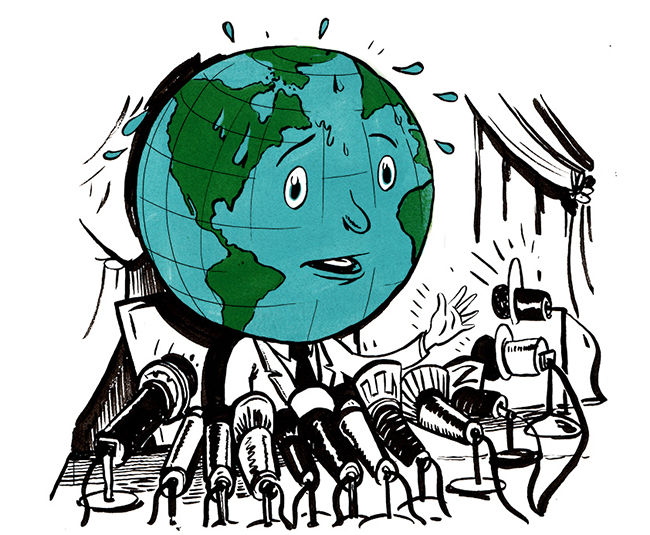ZEITGUIDE TO CLIMATE CHANGE

The COP21, also known as the 2015 United Nations Climate Change Conference, kicked off this past Monday in Paris with global leaders discussing what measures they can take to tackle climate change.
Now the question is: will anything actually be done by the time they adjourn on December 11th?
There’s certainly hope. Unlike past conferences, the United States and China are taking bigger leadership roles in this issue, with the former calling for a “high-ambition deal.” While 2015 has been something of a landmark year leading up to the conference in keeping the conversation around climate change in the spotlight.
This was most exemplified when Pope Francis became a star entrant into the climate change conversation with his major encyclical on the environment, “Laudato Si.” He framed environmental issues in scientific and moral terms, calling out a culture of rampant consumerism and waste, the inability of economic markets to end the exploitation of the poor and the disproportionate and devastating impact of climate change on them.
He’s got a point too. Recent studies predict that degradation and desertification of arable lands from climate change and unsustainable agriculture could create an estimated 50 million climate refugees in the next decade. (The Syrian refugee crisis was exacerbated by intensive drought.) This has also been a major talking point at the U.N. Conference on Climate Change, where poorer nations have called on the largest global polluters to finance a “climate change coordination facility” to plan for refugees. Some also have gotten more vocal about compensation for weather-related disasters.
It’s not all bad, though.
Global carbon emissions remained steady in 2014, the first time in 40 years that flat-lining carbon emissions were not correlated with an economic downturn. Much of that was attributed to a drop in coal use in China, the world’s largest polluter. China’s carbon dioxide emissions, predicted by President Xi Jinping to peak in 2030, might crest sooner and start to fall. China is to roll out a carbon cap and trade program in 2017.
India also recently announced a renewable energy pledge: At least 40% of the country’s energy will be generated by renewable sources by 2030, though it didn’t say when its total emissions would peak.
Of course, real change doesn’t just include policy and agreements.
Airlines are trying to get a bit of renewable energy into their systems—in this case, biofuels. United Airlines tested a flight fueled completely from farm waste and oilsderived from animal fats. It also invested $30 million in Fulcrum Bioenergy, a company that created a technology to turn household trash into fuel that can be blended directly with traditional jet fuels. Fulcrum claims its technology can cut an airline’s carbon emissions by 80% compared with traditional jet fuel. Alaska, Southwest and British Airways all have biofuel deals in the works—proactive steps before the EPA sets new carbon emissions rules for airplanes.
We can take action too. The New York Times recently outlined a number of ways in which our every day choices can make a collective positive impact. Such examples include the obvious like taking the bus, not throwing out food (it ends up in land-fills and increases methane gas), and buying less stuff (shipping and production increases carbon emissions).
